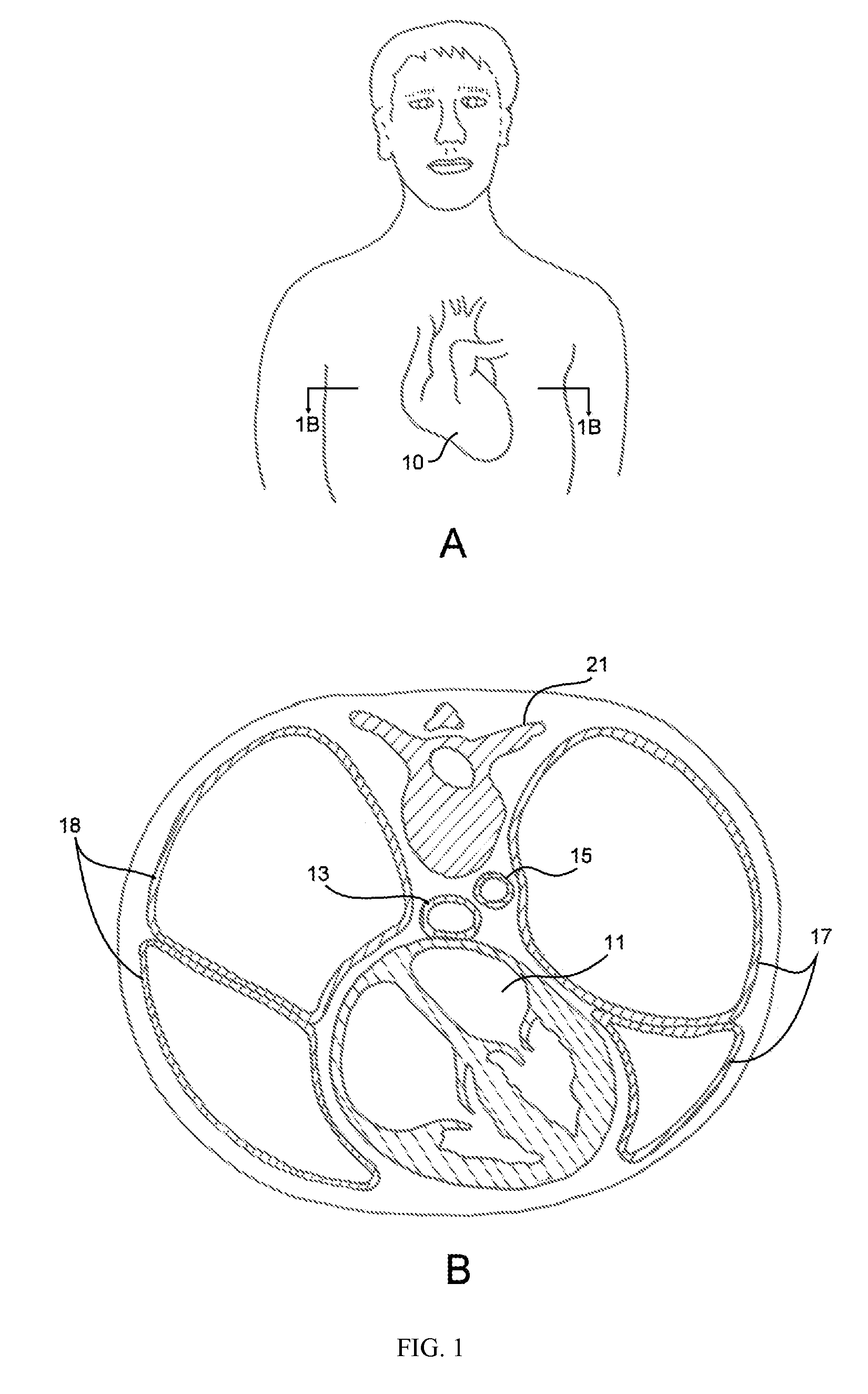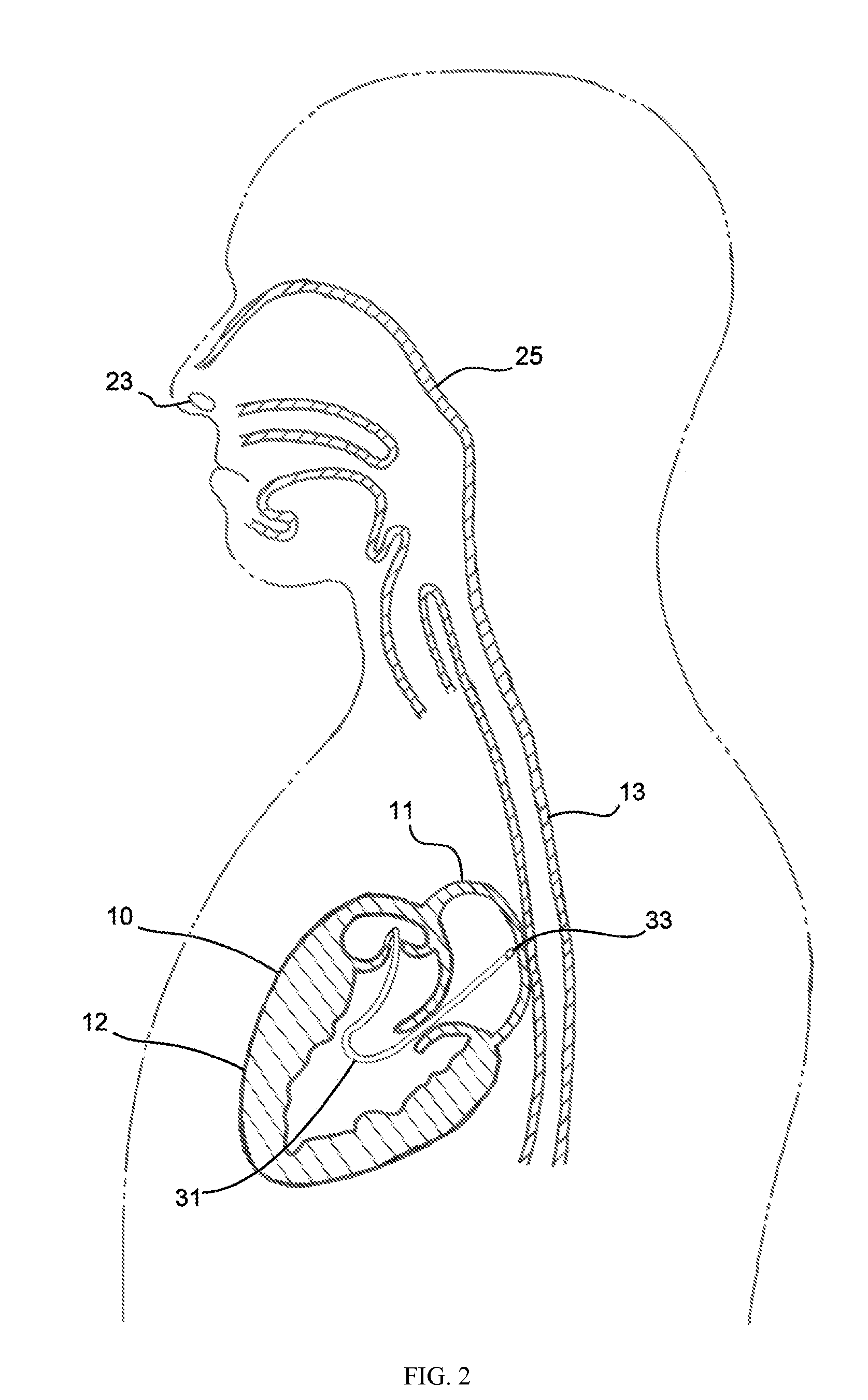Device and method for esophageal cooling
- Summary
- Abstract
- Description
- Claims
- Application Information
AI Technical Summary
Benefits of technology
Problems solved by technology
Method used
Image
Examples
Embodiment Construction
[0026] In reference to the drawings, FIG. 1A is a partial front sectional view of the human body illustrating the position of the heart 10 within the chest. FIG. 1B is a cross sectional view of the human body, at the level of the seventh thoracic vertebra 21 illustrating the relative position of the left atrium 11 of the heart 10 and the esophagus 13. It should be noted from FIGS. 1A and 1B, that the esophagus 13 is essentially in direct contact with the left atrium 11 for a portion of its course through the chest. The esophagus 13 is also flanked by the left lung 17 and right lung 18. The aorta 15 is positioned between the esophagus 13 and the left lung 17 and is in close proximity to the thoracic vertebra 21. It is well demonstrated in FIG. 1B that application of thermal energy to the posterior wall of the left atrium 11 of the heart 10 can potentially injure the anterior wall of the adjacent esophagus 13.
[0027]FIG. 2 is a partial longitudinal sectional view of the human body tak...
PUM
 Login to View More
Login to View More Abstract
Description
Claims
Application Information
 Login to View More
Login to View More - R&D
- Intellectual Property
- Life Sciences
- Materials
- Tech Scout
- Unparalleled Data Quality
- Higher Quality Content
- 60% Fewer Hallucinations
Browse by: Latest US Patents, China's latest patents, Technical Efficacy Thesaurus, Application Domain, Technology Topic, Popular Technical Reports.
© 2025 PatSnap. All rights reserved.Legal|Privacy policy|Modern Slavery Act Transparency Statement|Sitemap|About US| Contact US: help@patsnap.com



